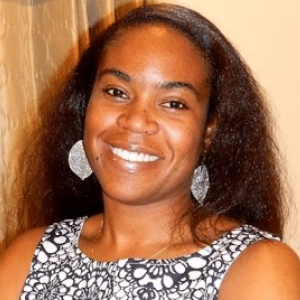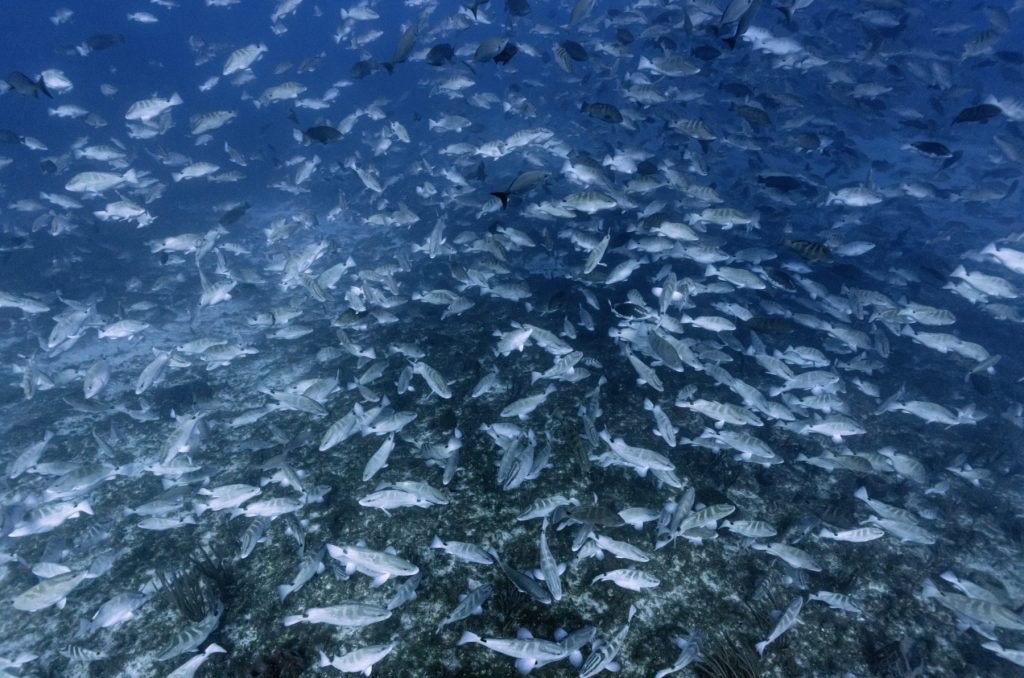
Fish Spawning Aggregations & Nassau Grouper
Imagine witnessing thousands of fish gathering in a synchronized spectacle, moving together for a common purpose — this is the magic of fish spawning aggregations (FSAs). Every year, these underwater gatherings not only sustain marine populations but also ensure the health of vital marine ecosystems like coral reefs, seagrasses, and mangroves.
Fish spawning aggregations (FSAs) are some of the ocean’s most impressive and awe-inspiring phenomena! Every year, large groups of fish, like Nassau grouper, migrate to specific locations at predictable times to reproduce. FSA are crucial for maintaining marine ecosystems and ensuring the resilience of fish populations.
Nassau grouper, a critically endangered species native to The Bahamas and wider Caribbean, plays a pivotal role in these remarkable events. But intense fishing pressure threatens their survival. Unfortunately, Nassau grouper are threatened by unsustainable fishing practices, particularly FSA fishing, which reduces the number of breeding fish. Our research aims to evaluate the status of FSAs to help provide guidance for fisheries management.
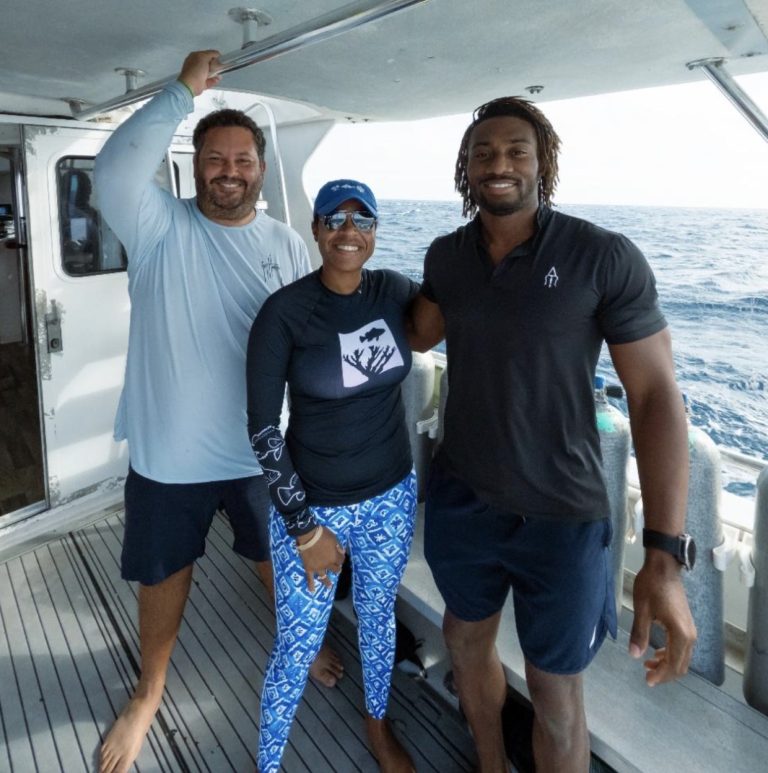
December 2024-2025 Research Expeditions
In The Bahamas, the Nassau grouper spawning season occurs between November to March annually. During the 2024-2025 spawning season, Perry Institute for Marine Science (PIMS) Senior Scientist, Dr. Sherman led three research expeditions to Eleuthera, Ragged Island and Abaco to survey spawning sites and collect valuable data on the health of these aggregations. Long-term collaborator, Lindy Knowles, Senior Science Officer at the Bahamas National Trust (BNT) assisted with underwater visual surveys and bathymetry mapping of the spawning sites on each trip. Denise Mizell, Abaco Program Manager (PIMS) contributed to surveys in January and February. Professional underwater photographer/videographer, André Musgrove, also accompanied the research team on the December and January trips to capture high quality imagery.
During the December and February full moons, the team visited historically reported FSAs in south Eleuthera, and northern Abaco, but no aggregations were observed. Conversely, in January, the team encountered the largest FSA surveyed in The Bahamas to date.
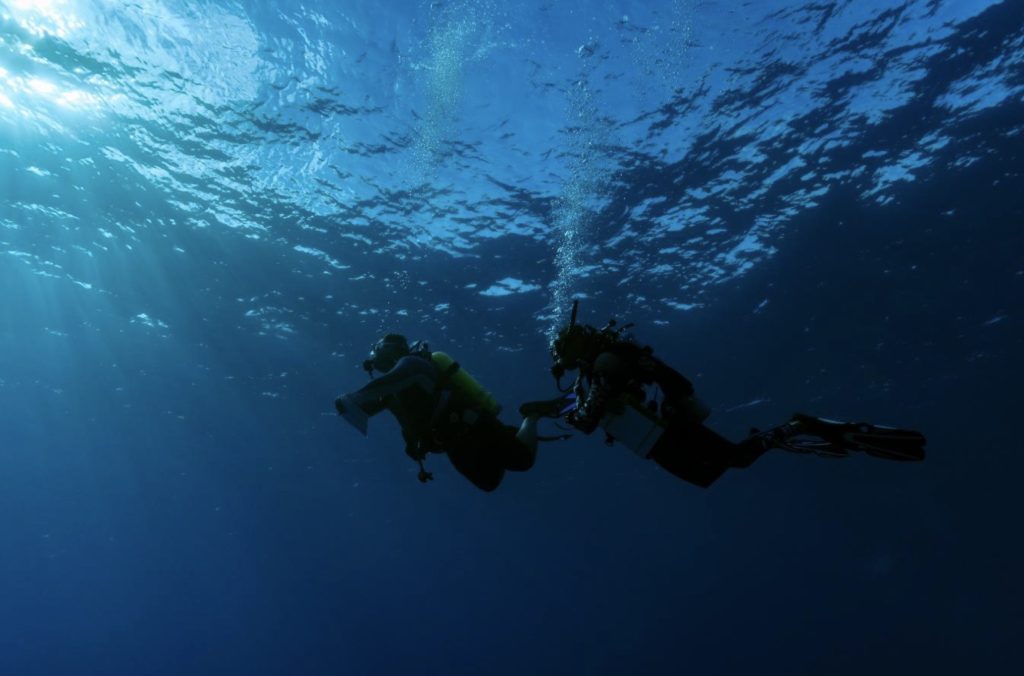
Thriving Spawning Site in Ragged Island
Thousands of Nassau grouper were observed aggregating in a remote location off the Ragged Islands, demonstrating the resilience of these populations when they are given the opportunity to thrive. “It was inspiring to finally observe a healthy FSA in action, and I’m more hopeful for the future of this species than I have been in a really long time. This is what FSAs used to look like throughout The Bahamas and Caribbean. We need to work hard to help rebuild sites that have been decimated and to protect sites thriving sites like this one”, said Dr. Krista Sherman.
Denise Mizell shared reflections from her experience. “Having the opportunity to be part of this year’s Nassau grouper spawning aggregation trips has given me hope — all in the ocean is not lost! We regularly hear stories of the dire circumstances of our oceans, don’t get me wrong, we do have a lot of work to do to return to healthy marine ecosystems, but there is still time to bring it back if we act NOW. A thriving, healthy aggregation with thousands of fish is a wonder to see!”
Having a professional underwater photographer and videographer aboard was a huge asset. This enabled the team to strictly focus on assessments, secure in the knowledge that ample photographs and videos would be taken to assist with cross-validation of diver estimates.
“I thoroughly enjoyed filming the Nassau grouper spawning in Ragged Island this year alongside scientists from PIMS and BNT,” said André Musgrove. “Capturing this phenomenon has been a longtime dream of mine because of how vital these spawning events are to The Bahamas’ marine ecosystem. Filming it was even more incredible than I had imagined because of the sheer number we witnessed at this location. We also saw large sharks and other marine life thriving in a healthy ecosystem”.― André Musgrove, Professional Underwater Photographer/Videographer
January’s expedition also had nearly perfect weather, with sunny skies and maximum swells up to 2.5 ft. These conditions not only enabled the team to complete multiple dives, but also and made bathymetry mapping off the Glen Ellen’s tender possible. Lindy Knowles explained, “Bathymetry mapping involves collecting depth values at specific times and places while driving a boat in a grid fashion. Having calm seas allows us to get accurate depth values so that we can get and a good understanding of what the structure of the seafloor looks like”.
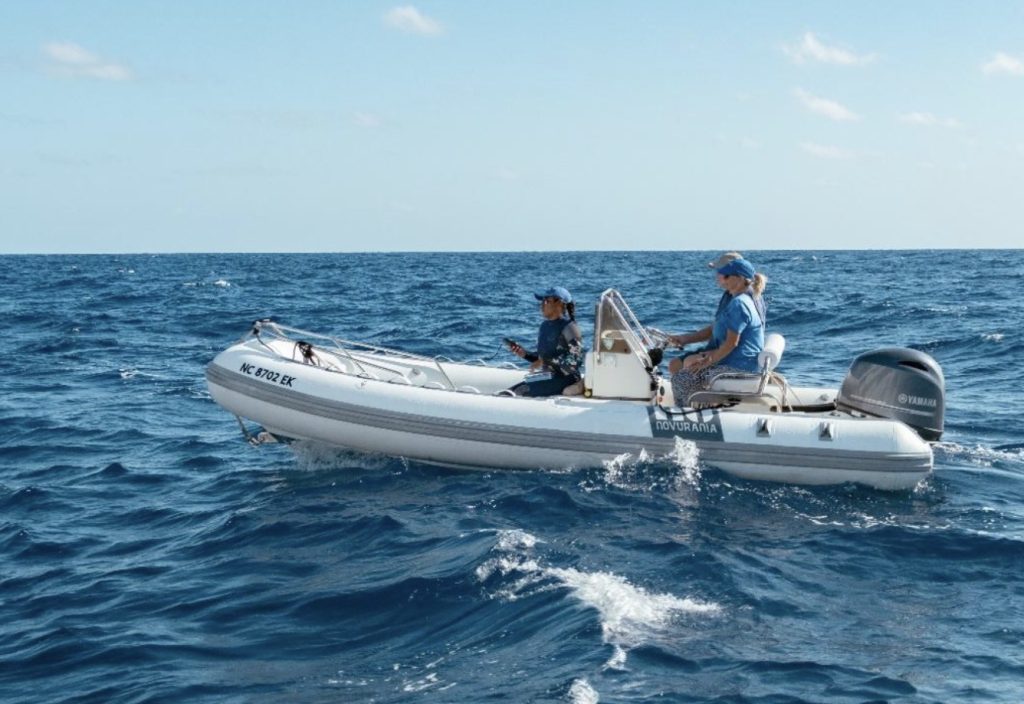
Importance of Protecting Healthy FSAs
The survival of Nassau grouper and other species that depend on FSAs is intricately linked to the health of our ocean and ability to sustain fisheries. Massive spawning aggregations like the site in Ragged Island are not only crucial for replenishing Nassau grouper populations, but for the long-term survival of this species. Available evidence shows that large breeding fish and aggregations produce more offspring than smaller fish and small aggregations. This is particularly important because larval survival is low and very few larvae will survive to become adults. The remoteness of the Ragged Island site is one of the reasons why it is still as large as historic aggregations in The Bahamas.
With increasing environmental challenges, it is essential that we recognize the importance of FSAs and take action to safeguard them. Preserving these vital ecosystems requires a collective effort. As Denise Mizell shared, “It is so important to follow the law and not take grouper during the closed season and encourage others to do so as well. These vital sites, used by many species to reproduce, should be protected to enable the cultural heritage of The Bahamas to thrive into the future”. Consumers, fishers, marine resource managers and scientists must work together to ensure that FSAs are protected and fishery regulations are respected.
Even creatives like André Musgrove, a professional underwater photographer/videographer who documented the research trips, play a vital role in raising awareness about the importance of these events. “I’m grateful for the opportunity to use my skills to support this research and help bring more attention to the importance of protecting spawning Nassau grouper”. ― André Musgrove, Professional Underwater Photographer/Videographer
Funding for Nassau grouper research was made possible via grants to the Perry Institute for Marine Science from the Moore Bahamas Charitable Foundation and Sean Connery Foundation, and the incredible generosity of Wayne Sullivan. Special thanks to Neal Watson, Alonzo Curry, Joevhann Roberts, Deondre Moss and Caleb Russell from the Bimini Scuba Center and the crew of the Glen Ellen for logistical support.
To learn more about fisheries research at PIMS visit the Fisheries Research & Conservation Program on our website and follow us on social media via @perryinstituteformarinescience.
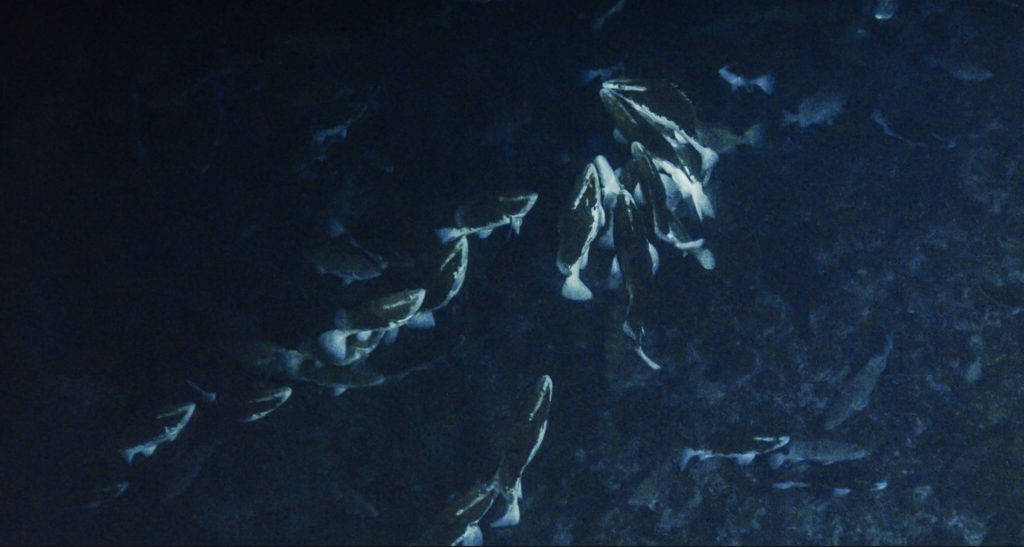
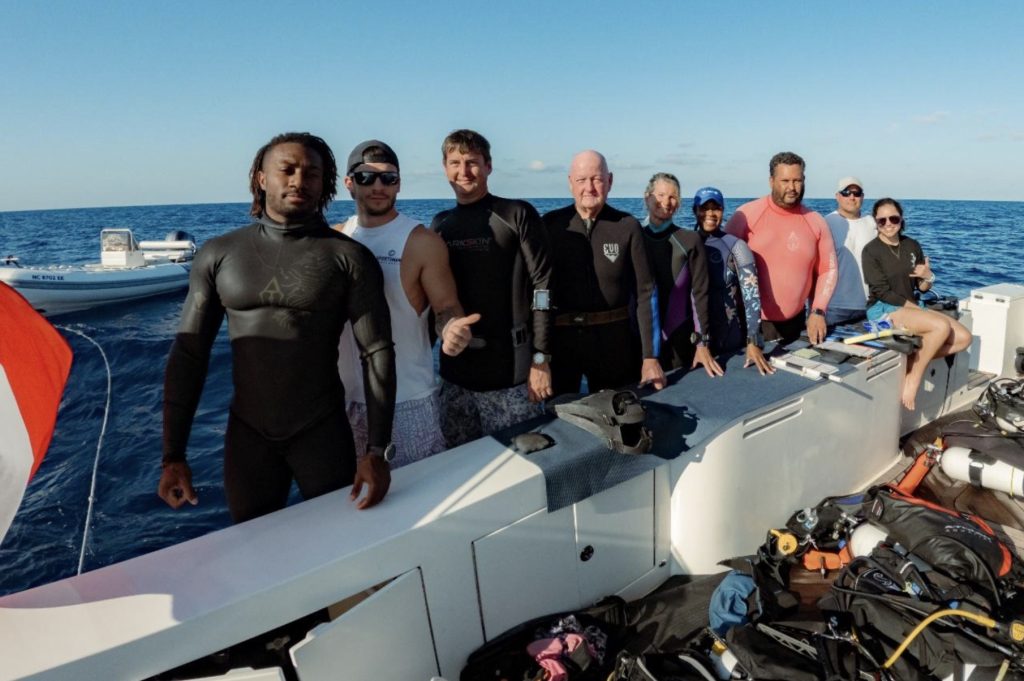
Dive Deeper
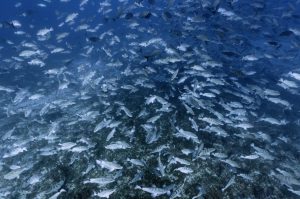
Thriving Fish Spawning Aggregation Inspires Hope for the Future
Nassau grouper FSA in Ragged Island during January 2025. | © André Musgrove Fish Spawning Aggregations & Nassau Grouper Imagine witnessing thousands of fish gathering in a synchronized spectacle, moving

A Year Later, Stranded Tug and Barge Still Scars Reef in Fowl Cays National Park–Residents Demand Accountability
A haunting aerial view of the grounded tug and barge in Fowl Cays National Park—still embedded in coral a year later, a stark reminder of the cost of inaction. Photo
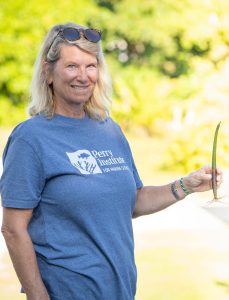
Women Leading Mangrove Restoration in The Bahamas
Have you ever wondered who’s behind the scenes saving our environment, right in our own backyard? Picture a group of energetic, determined women rolling up their sleeves and diving into

Rewilding the Marls of Abaco: PIMS Plants 100,000 Mangroves and Counting in 2024
As the afternoon sun bathes the Marls of Abaco in golden light, Bahamian boat captain Willis Levarity–locally known as “Captain to the Stars”–stands ankle-deep in soft, warm mud. A broad
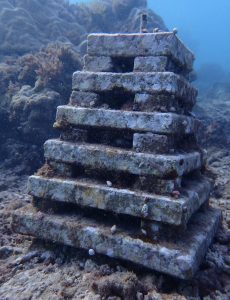
Unveiling Coral Reef Biodiversity: Insights from ARMS Monitoring Structures
An ARM teeming with new coral recruits and a diversity of marine life, highlighting reef recovery and biodiversity Understanding Coral Reef Biodiversity Most new PhDs in the natural sciences move

7 Key Takeaways from COP16: Confronting Coral Reef Challenges in a Changing Climate
United #ForCoral: Experts, advocates, and leaders from across the globe join forces at COP16 for the #ForCoral conference, hosted by the International Coral Reef Initiative. Together, they’re driving urgent action
